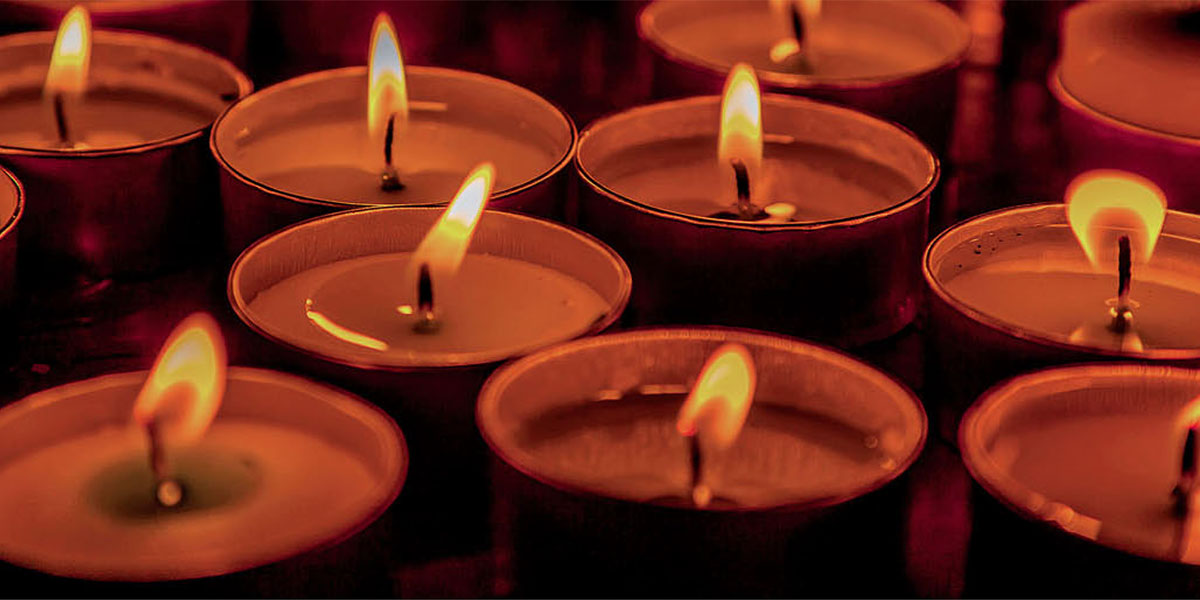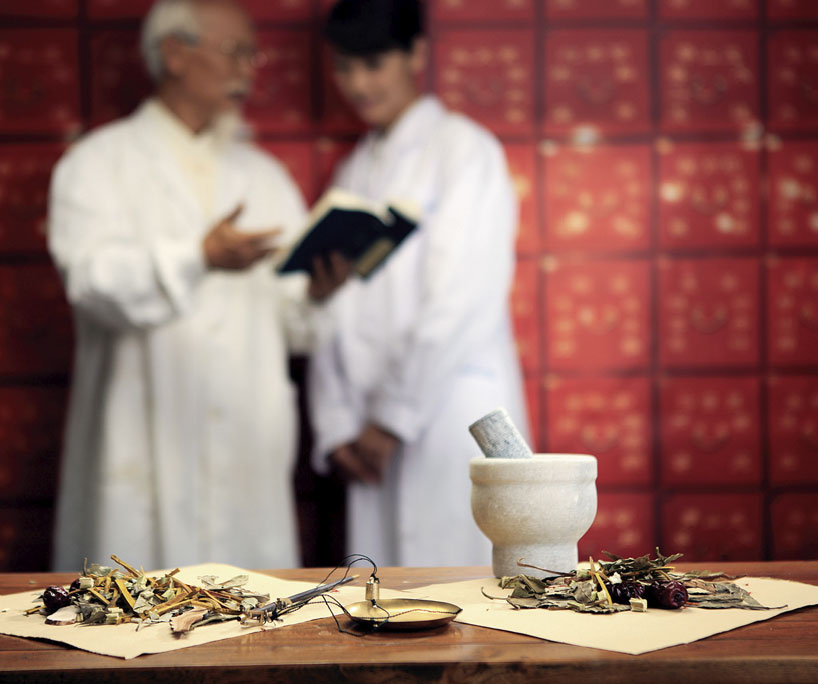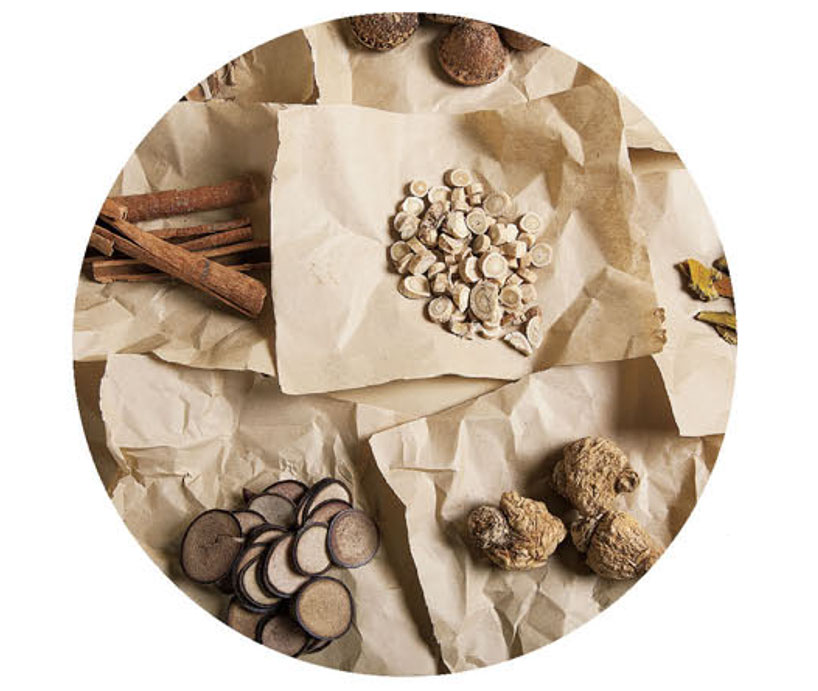

Traditional Chinese Medicine and Confucianism, Taoism and Buddhism
Many Confucian scholars decided to be a physician if they were not provided with the opportunity to become a government official. The Taoist school of thought believes in following nature is fundamental to maintaining good health and the Buddha says, “I am like a good physician who knows how to cure the illness and prescribe the right medicine.”
By Zhen Xueyan
The saying “if you cannot be a good government official, be a good physician.” was proposed by ancient Chinese scholars, who regarded medical profession as their second most preferred career goal. Why?
Rén (benevolence) was believed to be the highest principle of morality and core value of Confucianism. Originally, it denoted the kind relationship between people, which required all people to do things for the benefit of society and other people. The medical skill, known as the skill of ‘saving lives’, was then recognised as a ren skill as it met the requirement of ren by eliminating people’s pain. Influenced by the thought of ren , many doctors achieved ren by curing people’s illness. Thus, many Confucian scholars studied medicine in their free time and decided to be a physician if they were not provided with the opportunity to become a government official. They believed that ren could be achieved through the application of their medical skills, just as through their benevolent administration.
Zhōngyōng (The Doctrine of the Mean) was another significant Confucian thought. Confucians emphasised that staying in the middle between two contradictory parts to keep the balance was fundamental to development. Rooted in Chinese nation, zhongyong has been penetrated and applied in various aspects of traditional Chinese medicine.
According to traditional Chinese medicine, the human body consists of yin and yang , whose balance determines people’s health. When the balance between yin and yang is destroyed, the illness occurs. Therefore, the fundamental purpose of the cure is to neutralise the yin and yangof qi and blood (two basic bodily fluid according to Chinese medicine) to achieve the balance. The prescription of Chinese medicine also values the rule of zhonghe (everything steady and stable), which denotes a piece of prescription should follow the principle of jun-chenzuo-shi(Emperor-Minister-Assistant- Envoy) prescriptions to maximise the effect of the medicine. The jun prescription treats the main cause of a disease, the chen serves to augment or broaden the effects of jun , and relieves secondary symptoms. The zuo is used to modulate the effects of junand chen , and to counteract the toxic or side effects of these herbs. The shi is included in many formulae to ensure that all components in the prescription are well absorbed, and to help deliver or guide them to the target organs.
A famous saying by Lao Tzuis “Man follows the laws of earth. Earth follows the laws of heaven. Heaven follows the laws of Tao. Tao follows its own nature.” Nature’s Way refers to all the rules existing in nature. According to Lao Tzu, humankind is the essence of the nature, forms one unity with nature. Therefore, humankind and nature should follow the same rule, and the maintenance, protection and treatment of our health should be implemented along with consideration and analysis of the broader natural environment that the human being lives in and interacts with. For example, ancient Chinese people followed the ultimately simple living habit of going to work at the sunrise while going to rest at the sunset. If such living routine is undermined and one stays up until late and gets up late, the illness occurs. The Taoist school of thought believes in following nature is fundamental to maintaining good health. It also values the importance of maintaining good physical and mental health; the harmony between human beings themselves as well as between human being and nature. Maintaining good mental health is to be open-minded and to keep the inner peace when confronted with the unexpected. It also requires showing empathy and understanding to other people and to avoid haggling over every ounce. One should learn to control their emotions and do not overthink of what is beyond their capacities. Being satisfied with what one has is thus the goal.
Yangsheng (nurturing life) has been a heated topic among Chinese people, which is dated back to Chuang Tzu. The philosopher Chuang Tzu aimed to learn how to live a long life from Ancestor Peng, who is a legendary long-lived figure in China since his life spanned over 800 years. To live a long life, Taoists consistently studied liandanshu (spagirism) to try to find the elixir and endeavoured to put the theory into practice. Regardless of the absurd original objective of liandanshu , which was aimed to immortalise human life, the endeavourled to the very beginning of the manufacturing of medicine. Dated back to Han (206 B.C.-220 A.D.), Wei (220-265) and Jin (265-420) dynasties, Taoism had the capacity to produce mineral medicine, which was the direct product of the elixir, such as the mercury ointment used for curing ringworm and mercury product used for constipation. Beginning with the Tang Dynasty (618-907), the immortality pills were turned to the commonly used traditional Chinese medicine for external application with special effects, such as qingfen, hongshengdan, baijiangdan .
An old Chinese saying goes like this: The traditional Chinese medicine was closely associated with the Taoism and nine out of ten Taoists were physicians. Taoism was closely related to traditional Chinese medicine. Besides, many significant Taoists were also recognised as famous medical scholars, such as Tao Hongjing and Ge Hong and so on.
Buddhism, which originated from ancient India, was brought into China through its Western Regions during the Han Dynasty (206 B.C. – 220 A.D.). It reached its peak in Jin (265 – 420) and Tang (618 – 907) dynasties of China. As a religion introduced from other regions, Buddhism was finally localized in China. As a religious system of thought, it had a close relationship with traditional Chinese medicine.
The Buddhist medicine formed an important part in ancient Indian medicine. As Buddhists valued the importance of medicine and promoted the belief in Buddha through medicine, they enhanced the integration and influence between the Buddhist medicine and traditional Chinese medicine. For example, the treatment of cataract by traditional Chinese medicine, named as jinzhen bazhang shu (removing the cataract with the gold needle), originated from the ancient Indian medicine and was found in Buddhist translations in Han Dynasty. Famous Chinese poets, such as Du Fu, Bai Juyi and Liu Yuxi, all praised the treatment in their poems. For example, Bai Juyi once said, “Removing the cataract with the gold needle has been the best method in curing the disease.” The modern treatment of cataract has also adopted the method, which was developed two thousand years ago. In addition, the massage skill in ancient Indian medicine was brought into China in Tang Dynasty, and became a part of Chinese traditional massage skill. Sun Simiao in Tang Dynasty recorded 18 postures of ‘Massage from Tianzhu’ in his Qianjin Yaofang (Valuable Prescriptions for Emergencies) . This massage, which originated from the exercise method in Buddhist texts, was highly recognised by traditional Chinese physicians.
There are thousands of varieties of vegetation and animals recorded in the Buddhist classics, including 320 categories of commonly used medicine. These medicine ingredients, such as cost us root (muxiang), clove (dingxiang), borneol (longnao), round cardamom fruit (doukou), chebula (helile), frankincense (ruxiang), turmeric (yujin), Ferula asafoetida (ewei), and fanhunxiang, were imported from India, Southeast Asia and Western Regions and recognised by traditional Chinese medicine, and formed as an important part of traditional Chinese medicine. Sun Simiao, a famous physician in Tang Dynasty, collected prescriptions from the well-known Buddhist physician Jivaka (Madam Qi ) and some commonly used Buddhist enchantments in his book Qianjin Yifang (Supplement to Valuable Prescriptions).
Since Sui and Tang dynasties, the temples in China have received financial support from the authorities to establish medical charities for the homeless and patients. According to Xu Gaoseng Zhuan (Continuation of the Biographies of Eminent Monks) in Tang Dynasty, the earliest specialised leprosy hospital in ancient China was established in a temple. To maintain and expand the religion, the monks always attracted more believers through medical methods. Most monks knew well about medicine and provided prescriptions, and they also established hospitals to promote the close relationship between Buddhism and Chinese medicines and their mutual development. Many famous physicians were monks, such as Lin Daoren in Tang Dynasty, whose book Xianshou Lishang Xuduan Mifang (Secret Recipes of Wound-treating and Bone-setting Taught by Celestials), recognised as the earliest classic of orthopaedics in China, helped to lay the foundation of orthopaedic surgery.
The Buddha says, “I am like a good physician who knows how to cure the illness and prescribe the right medicine.” According to Buddhists, the Buddhist doctrine itself is a study of medicine that helps human beings to escape from illness and death. In addition, Buddhists also advocate protecting all living creatures from suffering and keeping mercy in mind, which has a profound impact on the moral rules for physicians. These sentiments can be found in Sun Simiao’s book Dayi Jingcheng (Virtues of Great Physicians).
Published in Confucius Institute Magazine
Number 50. Volume III. May 2017.
Number 50. Volume III. May 2017.

























No hay comentarios:
Publicar un comentario